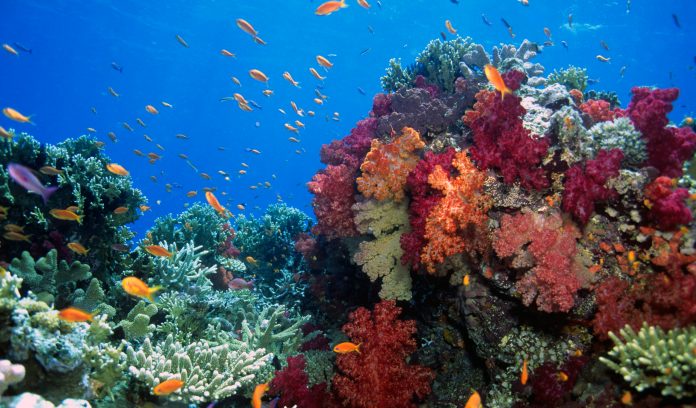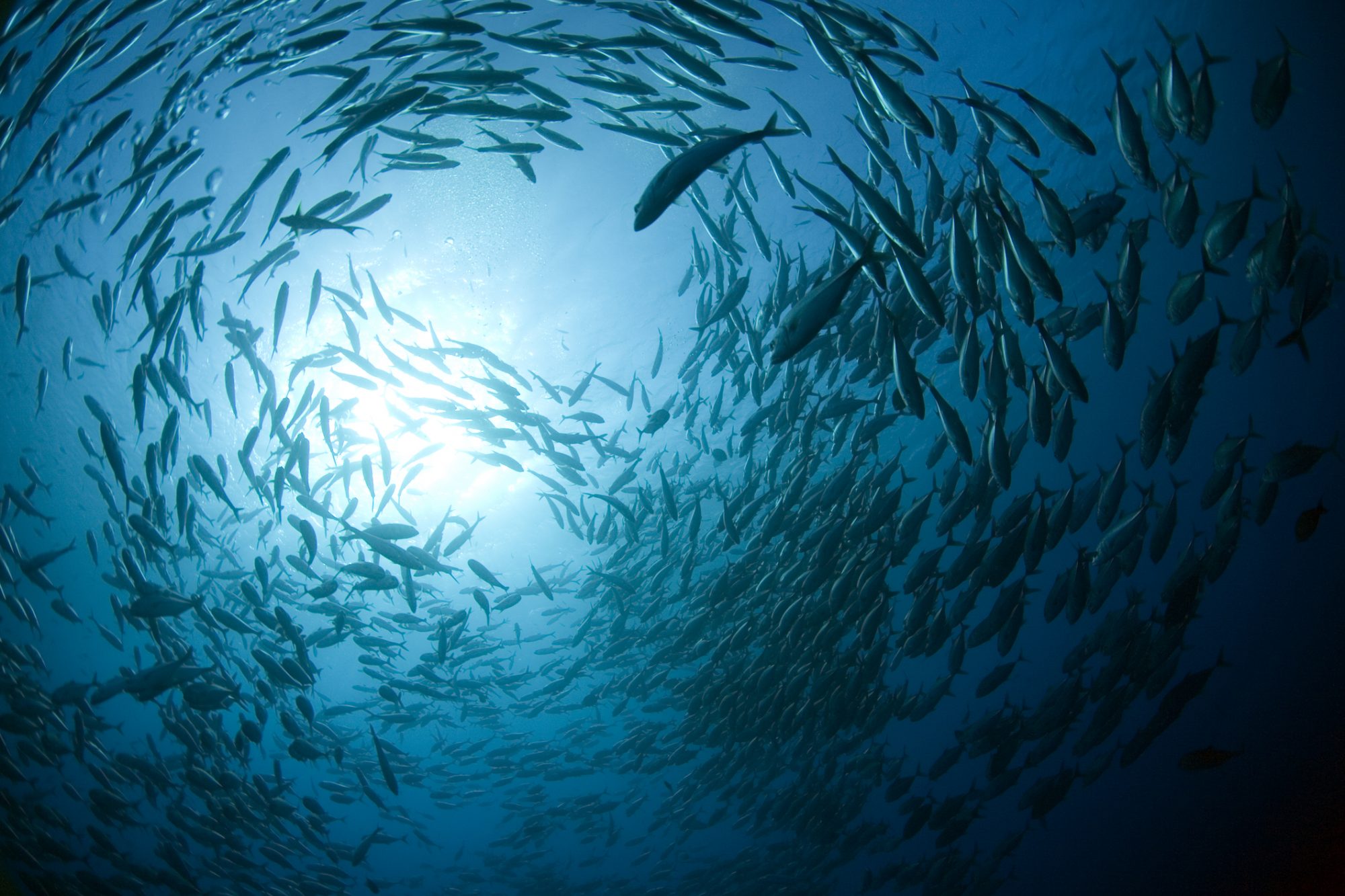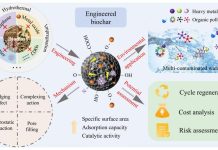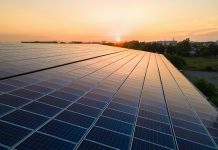Nicolas Pade & Sabrina Gaber of the European Marine Resource Centre discuss optimising exploration and exploitation of the blue bioeconomy
The seas and oceans have played an essential role in Europe throughout history in activities such as transportation and exploration. Moreover, the seas and oceans have provided us with employment, leisure, and other opportunities. Today, Europe’s “blue economy” (1) provides 4.5 million jobs, according to the European Commission, across both land and sea, in diverse sectors from shipping to aquaculture and fisheries, and tourism. Yet, there are still many areas of the blue economy that are underexploited and could contribute significantly to addressing Europe’s societal challenges (e.g., health, food security, sustainable/clean energy). Most importantly, the blue economy needs to be managed in a sustainable manner and protected.
A significant part of blue economic value comes from sectors such as shipping, oil and gas, and more recently, renewable energy. The blue bioeconomy is hugely important and has great potential to expand in fields such as microalgae culturing and marine bioprospecting. (2) However, the blue bioeconomy is dependent on healthy and productive ecosystems, and this includes rich biodiversity. Without healthy biodiversity, the bioeconomy will never reach its full potential.
Biodiversity is key to healthy eco-systems and in ensuring that our natural environments continue to provide the important services that we depend upon. As often stated, the ocean provides half of the oxygen that we breathe, significant quantities of food, and acts as an important carbon storage and climate regulator. Sessile organisms and plants are important biodiversity components. For example, kelp forests, mangroves and coral reefs provide vital habitats for fish species of economic value; seagrass meadows store large amounts of carbon; mussel beds filter and clean water; and, collectively, this biodiversity plays an important role in flood and erosion defences. Yet, overfishing and climate change, among others, are compromising the livelihood of these sessile organisms and plants, and, ultimately, jeopardising the essential role that they play in mitigating the negative effects of climate change and ensuring our livelihoods. Rich biodiversity and healthy water quality in these important habitats create stronger and more resilient communities, more effective and efficient in absorbing and storing carbon.
The natural “services” provided by marine ecosystems are enabled by the organisms that live in them and interact with one another. This, in turn, creates rich food sources for commercially important species, such as fish and shellfish, leading to healthier fishing populations. Rich biodiversity also makes for resilient ecosystems, able to endure perturbations and disease; it is also an immense source of new potential materials, products, medications, and treatments. The cosmetic sector, for example, has successfully brought many new products to the market based on marine-derived bioactive substances. Even with COVID-19, several potential treatments were explored from the marine environment. However, much of the potential in biodiversity is still beyond our reach as we lack an understanding of many of the interactions in the marine microbiome that produce promising compounds. Many compounds are only found when many organisms are grown together, produced by the interactions of these organisms with each other. Through manipulation of these relationships and the right environmental para-meters, considerable amounts of new compounds would become available for science to explore and industry to exploit.
Achieving biodiversity recovery
Europe depends on its seas and ocean to prosper, yet we are failing to protect these critical habitats that provide us with important economic income and critical services such as food, the air that we breathe, and climate change mitigation. Our seas are currently facing a perfect storm of over-exploitation, pollution and global climate change, which are all having a devastating impact on the seas’ ability to provide services and resources for humans. Europe is now aiming to implement ambitious plans, such as the Green Deal and the Biodiversity Strategy, aimed at creating a more sustainable European economy and restoring our damaged ecosystems and biodiversity. Important and bold steps are being taken, for example with the initiative of phasing out bottom trawling in many areas in Europe’s regional seas and new targets for 30% of European waters being protected. Such initiatives will allow the seafloor to recover and new habitats to be established, encouraging biodiversity growth and ensuring that the carbon stored in sediments is not released.
However, there is one significant issue to bear in mind with biodiversity recovery, and that is our ability to monitor, observe, and predict the seas and its biodiversity. To achieve biodiversity recovery, we first need to know its health and how it changes over seasons and time. To establish new marine protected areas (MPAs) we first need to know where the bulk of our biodiversity is, where it goes, and the critical habitats to maintain or restore. To plan for new maritime and coastal developments, climate change mitigation strategies, and financial investments, we need to be able to effectively model and predict the marine environment.
While there are many ongoing efforts to monitor and observe the oceans and ocean life in Europe, there are currently very few (if any) coordinated permanent, long-term monitoring and observation initiatives funded by the European Union or its individual member states. These efforts tend to be funded competitively from research grants and institutions’ own budgets and are therefore not coordinated, not sustainable over time, rarely trans-national, and therefore of limited use in monitoring biodiversity at the scale of regional seas and oceans. The lack of coordination between national and European agencies and inadequate funding is hampering our ability to monitor current ecosystem and biodiversity health, limiting our understanding of these highly complex systems and their interactions with the ocean and climate. This lack of observation and prediction capacity in Europe ultimately prevents us from optimising our exploitation of the blue bioeconomy.
Healthy marine ecosystems produce more food for us, store more carbon, produce more oxygen, and shelter our land better. It is in our individual and collective interest to preserve and sustainably manage our collective resources. Europe has become aware that MPA initiatives have failed to be properly implemented and that serious action is required. As such, the development of more European-wide MPAs is an essential part of biodiversity restoration. We can also see that despite our dependence on the sea, we still need to address important shortcomings in our abilities to monitor European biodiversity in the sea and strengthen our capabilities to understand and manipulate marine organisms. These are prerequisites to be able to properly manage our interaction and exploitation of our marine biological resources.
An essential multi-tiered approach
Finally, it is worth noting that European-level efforts to restore marine biodiversity must go hand-in-hand with additional individual, company-level, and country-level initiatives. We need brave new steps in reducing individual consumerism, shifting the burden of recycling and minimising environmental impact to the activities and companies that produce them, and initiatives to encourage biodiversity. Unless we have a multi-tiered approach (individual, company, state, Europe), we will not be able to restore the seas and their biodiversity to healthy and sustainable states. The blue bioeconomy is an opportunity waiting to be fully seized, but it requires a change of policy, habits, and investment in the right capabilities. We know what needs doing, and now is the time to act.
References
(1) Blue economy is a term relating to the exploitation, preservation, and regeneration of the marine environment. More: https://ec.europa.eu/oceans-and-fisheries/ocean/blue-economy_en
(2) The blue bioeconomy turns aquatic biomass into food, feed, nutraceuticals, pharmaceuticals, cosmetics, energy, packaging, clothes and much more. Source: https://ec.europa.eu/oceans-and-fisheries/ocean/blue-economy/blue-bioeconomy-and-blue-biotechnology_en
Please note: This is a commercial profile













